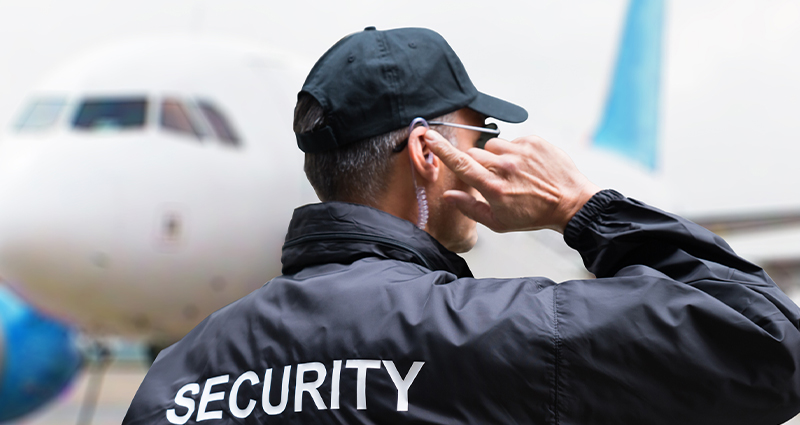Emerging Security Threats in Business Aviation: Activism and Down-Route Risks

The security landscape for business aviation is shifting, and operators must remain vigilant. In recent years, operators have encountered increasing ground-based threats unrelated to traditional geopolitical instability. Instead, organized non-state actors (activists, opportunists and localized disruptors) who perceive business aviation as a symbolic or tactical target have begun taking aim at aviation.
Threats have evolved. They can range from climate activists breaching airport fences to high-profile vandalism of parked jets and targeting of the C-suite. These are not isolated incidents but part of a growing trend in which operators must prepare for deliberate, targeted interference at or near operational touchpoints—hotels, FBOs, hangars and roadways.
A New Type of Risk
Historically, corporate and private aviation has managed a well-defined set of risks, including geopolitical volatility, threats to the executive team in unstable regions and opportunistic petty crime. Today’s threat profile includes ideologically driven groups that use disruption—especially public, visual disruption—as a means of protest and advocacy. This operational risk is now a part of the overall risk spectrum.
Several recent incidents across Europe and North America have involved protesters gaining access to business aviation terminals or apron areas. Their objectives may not be to harm individuals but to capture attention and cause operational disruption and reputational damage. These events often unfold rapidly and without prior notice, challenging traditional notions of a secure, low-risk destination.
“We’re seeing a growing convergence between social and political activism and the high-profile events our clients attend, like annual meetings, conferences and summits where their executives are increasingly visible,” says John Cauthen, Vice President of Aviation Security at MedAire. “In light of recent tragedies targeting corporate leadership, operators must factor reputational risk and personal safety into even the most routine down-route planning.”
In addition, the movement of high-net-worth individuals and corporate leadership can intersect with civil unrest, large-scale protests or targeted campaigns aimed at broader social or political causes. Even a well-secured FBO may be adjacent to vulnerable public access points or infrastructure susceptible to demonstration-related blockages.
A location’s threat landscape can shift, particularly in countries where lawful protests can still create unpredictable effects on crew, passengers or assets. Importantly, it also reflects the need for collaboration among flight operations teams, airport authorities and local intelligence sources to preserve business continuity without compromising safety.
Unlike commercial aviation, business aviation operations may rely on a leaner in-house infrastructure. Flight departments often collaborate with third-party handlers, local agents or concierge services for trip support. While efficient, this model can sometimes lead to underestimating ground-based risk exposure, particularly in otherwise “safe” regions.
Some vulnerabilities include:
- Unsecured or low-visibility airport perimeters, where access points may be inadequately monitored
- Crew accommodation in city centres during periods of political tension or mass gatherings
- Publicly visible tail numbers or branding that identify aircraft to activists or opportunists
- Security planning that overlooks last-mile transport between the airport and the hotel
Security incidents affecting business aviation do not need to involve violence to have an operational impact. A protest delaying crew movements, blocking access to a hangar or resulting in an unauthorized photograph of a sensitive client can all trigger reputational, financial or compliance concerns for operators.
Preparing for the Next Security Disruption
While the nature of threats continues to evolve, the principles of risk mitigation remain consistent: vigilance, adaptability and pre-emptive planning. Flight departments and operators should consider the following:
- Conducting proactive threat and risk assessments before each trip, especially when major political, economic or environmental events occur
- Developing alternate routing and secure transport options in high-density urban or politically active areas
- Training crew members to recognize early signs of escalating protest activity or suspicious behavior
- Strengthening coordination with local airport security teams and requesting additional support when warranted
- Establishing contingency communications plans if local disruptions affect mobile networks or access to primary support channels
- Briefing crew and passengers on conduct in public spaces
This final point is essential when traveling to locations with elevated protest activity or press presence. Even inadvertent engagement with demonstrators or journalists can escalate tensions or lead to reputational fallout. Operators should brief crew and passengers on how to politely disengage from protestors or media without making political statements and clearly instruct them to refer any questions to the appropriate company spokesperson. Providing straightforward, rehearsed responses can help everyone stay calm and professional if approached.
Final Thoughts
Security is no longer a background consideration but an operational imperative that must be monitored and managed, like weather or aircraft maintenance. Activism and civil disruption are unlikely to diminish in the current global climate, and business aviation’s visibility makes it a potential flashpoint for targeted actions.
By recognizing that ground risks can emerge even in politically stable environments, operators are better positioned to implement practical, layered strategies that protect their people and preserve operational continuity. The stakes may vary, but the expectation is always the same: every journey ends safely, no matter what happens on the ground.

Flight departments around the world rely on MedAire, an International SOS company, to reduce their travel safety risks. Crews are trained on the resources to manage in-flight illness and injury with onboard medical equipment and telemedicine assistance. On the ground, passengers and crew have one resource for medical referrals; guaranteed payments for medical expenses; assistance with lost documents and prescriptions; online and e-mail travel advisories; evacuation support and a host of other services.
http://www.medaire.com/
© 2025 MedAire, Inc.. All Rights Reserved.
Related Posts

Little Things Matter: The Lost Key of the Titanic
Ultimately, the story of the Titanic’s lost key is a call to action for aviation professionals. It underscores the need for unwavering attention to detail, robust systems to catch human error and a culture that prioritizes safety over haste.

Part 108: The Next Step in BVLOS Integration and Drone Innovation
As the drone industry awaits the Federal Aviation Administration’s (FAA) forthcoming Part 108 regulations, the landscape of Beyond Visual Line of Sight (BVLOS) operations stands on the brink of transformation. These anticipated rules aim to standardize BVLOS flights, enabling more complex and expansive drone missions across various sectors.

